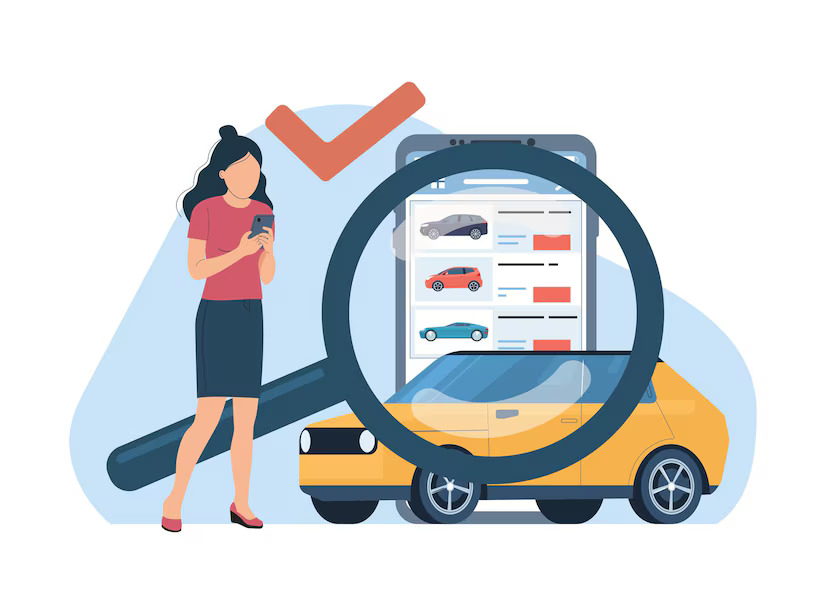The automotive industry is highly competitive, and every lead represents a valuable opportunity for dealerships to increase sales. However, many dealerships struggle with lead management, resulting in lost potential customers and declining revenue. Understanding why leads slip through the cracks and implementing effective solutions can help dealerships optimize their car dealership sales strategy and improve conversion rates.
Common Reasons Why Automotive Dealerships Lose Leads
1. Slow Response Times
One of the biggest reasons dealerships lose leads is slow response times. Potential customers expect immediate engagement when they inquire about a vehicle. If a dealership takes hours or even days to respond, the lead is likely to move on to a competitor.
Fix: Implement an automated automotive lead management system that sends instant responses to inquiries and ensures follow-ups within minutes. This creates a sense of trust and reliability, making potential buyers feel valued and increasing the likelihood of a sale.
A study found that dealerships that respond within five minutes are 100 times more likely to convert a lead than those that take longer. Speed is a crucial factor in today’s digital world, where consumers expect instant interactions. Automated chatbots, CRM integrations, and AI-powered responses can help bridge the gap and prevent lead loss.
2. Poor Lead Tracking and Follow-Up
Many dealerships do not have a structured lead tracking system, leading to disorganized communication and lost opportunities. Leads may get ignored, forgotten, or mismanaged due to manual tracking or outdated systems.
Fix: A robust automotive lead management system can automate follow-ups, segment leads based on interest levels, and ensure no potential customer is left unattended. Investing in lead-tracking automotive software helps sales teams stay organized, providing real-time insights into where each customer stands in the buying journey.
Following up is just as important as the first interaction. Studies suggest that 80% of sales require at least five follow-ups, yet 44% of salespeople give up after just one. Creating a structured follow-up strategy ensures that warm leads don’t get cold due to negligence.
3. Lack of Personalization in Communication
Customers expect personalized interactions rather than generic responses. If a dealership sends out templated responses without addressing a customer’s specific needs, it can lead to disengagement.
Fix: Train sales representatives to personalize their communication by referencing the specific car model or financing option the lead inquired about. CRM tools can help store customer preferences for better personalization.
For instance, if a customer inquiries about an SUV with advanced safety features, responding with details about how a specific model meets their criteria builds trust. Including personal touches like addressing them by name or remembering past interactions improves engagement significantly.
4. Inconsistent Marketing Strategies
An ineffective car dealership sales strategy often leads to inconsistent lead generation and retention. Relying on only one or two marketing channels instead of a multi-channel approach limits the dealership’s reach.
Fix: Use a mix of digital advertising, social media marketing, email campaigns, and SEO to attract and nurture leads effectively. Dealerships that leverage online advertising, local SEO, and social media platforms like Facebook Marketplace and Instagram see higher engagement and conversion rates.
A well-rounded marketing approach also involves targeted email campaigns and remarketing ads that remind potential customers about the vehicles they previously viewed. Retargeting strategies ensure that dealerships stay top-of-mind for interested buyers.
5. High Lead Abandonment Due to Complex Buying Processes
If the car buying process is complicated or requires multiple steps before getting a price quote, potential customers may lose interest. Lengthy forms, slow-loading websites, or unclear financing options can deter leads from proceeding further.
Fix: Streamline the sales process by offering online price estimates, financing pre-approvals, and simplified appointment booking to keep customers engaged. Dealerships that provide transparent pricing and virtual financing options see higher conversion rates.
6. Poor Customer Experience
Negative dealership experiences, such as pushy sales tactics or lack of transparency in pricing, can turn leads away. Customers today seek a smooth, hassle-free buying process.
Fix: Train staff to focus on relationship-building and provide clear pricing information. A well-organized car dealership sales strategy should prioritize trust and transparency.
7. Lack of Mobile Optimization
Today’s customers primarily use their smartphones to research and inquire about cars. If a dealership’s website is not mobile-friendly, potential buyers may leave due to poor navigation and slow loading times.
Fix: Ensure that the dealership’s website is mobile-optimized, with fast load times, easy navigation, and a simple lead capture form. Mobile users should be able to schedule test drives, explore inventory, and contact the dealership seamlessly.
How to Fix Lead Loss with a Strong Automotive Lead Management System
1. Implement a CRM System
A dedicated automotive lead management system centralizes customer data, automates follow-ups, and provides valuable insights into lead behavior. This ensures no lead is overlooked and helps sales teams manage their pipeline efficiently.
2. Automate Lead Nurturing
Automation tools can send timely follow-up emails, text reminders, and special offers to keep leads engaged. AI-powered chatbots can also handle initial inquiries and qualify leads instantly. Automated workflows improve response times and prevent missed opportunities.
3. Improve Lead Scoring
Not all leads are the same. By assigning scores based on interest levels, dealerships can prioritize high-quality leads and allocate resources accordingly. CRM systems can categorize leads based on engagement, past interactions, and likelihood to purchase.
4. Utilize Data-Driven Insights
Analyzing customer data helps dealerships refine their car dealership sales strategy by understanding what works and what doesn’t. Tracking conversion rates, customer preferences, and sales performance allows for better decision-making.
5. Optimize Digital Marketing Efforts
A strong online presence is crucial for lead generation. Dealerships should optimize their websites, run targeted ads, and leverage social media platforms to attract and convert leads. Google My Business, local SEO, and paid search ads can enhance visibility and bring in more potential buyers.
6. Offer Seamless Online and Offline Integration
Today’s customers research online before visiting a dealership. Ensuring a seamless transition between online inquiries and in-person visits enhances the buying experience and reduces lead drop-off rates. Dealerships should offer virtual test drives, online consultations, and easy financing tools to keep potential customers engaged.
7. Invest in Lead Recovery Strategies
Dealerships should have a strategy to win back lost leads. Sending follow-up emails, offering limited-time promotions, and reaching out with personalized financing options can bring back leads who initially walked away.
Conclusion
Losing leads is a costly issue for automotive dealerships, but with the right automotive lead management tools and a well-structured car dealership sales strategy, it is possible to increase conversions and sales. By responding quickly, personalizing communication, optimizing digital marketing efforts, and streamlining the buying process, dealerships can maximize every lead’s potential.
To implement advanced lead management solutions tailored for automotive businesses, visit Tiez Interactive or explore their expertise in automotive software development. Tiez Interactive specializes in innovative software solutions designed to enhance lead management, optimize dealership operations, and improve customer engagement through cutting-edge technology.




